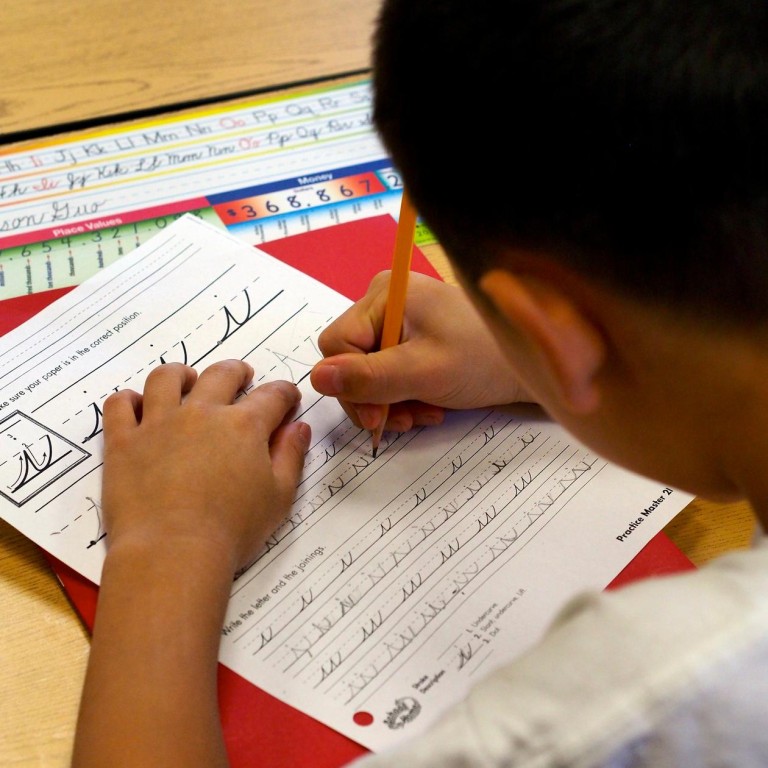
Learning cursive script in primary school improves thought processes
Educational research points to the value of learning and using cursive handwriting on a regular basis. It helps to increase the speed at which children work, and helps their fluency of thought
Schools vary greatly in their beliefs as to when pupils should be taught to join their letters when writing. But educational research points to the value of learning and using cursive handwriting on a regular basis.
It helps to increase the speed at which children work, and helps their fluency in general - not just in writing, but also their fluency of thought.
Also, it helps students to improve their spelling accuracy. Writing letters in groups that have meaning (phonemes) helps them remember common spellings and helps build up comprehension skills.
A cursive style helps children form their letters correctly, and encourages joined-up thinking when writing. Once bad writing habits are learned by printing poorly-formed letters, or inaccurate spellings, they are hard to correct.
Many children in Hong Kong, are taught to write the individual letters of the alphabet at kindergarten, as your daughter was.
So many are ready to move on to the next stage of using a more natural and flowing style when they start primary school.
It is still early in the school year but if you find that your daughter is still struggling with the whole process, discuss with her teacher ways in which you can support her.
You could ask for guidance on how to help her when she is writing at home, so you can check that she is using the correct technique. Many children can't even hold a pen or pencil properly, for example.
Getting the pencil grip right at this stage is crucial to future writing success, as this can be very hard to correct later. Ideally, your daughter should try to develop a smooth, cursive style of writing, where her hand is firm but relaxed.
The paper should be well supported and slightly tilted and she should steady it with her other hand. She should aim for clarity first, and then build up fluency and speed with practice.
Some schools do make it a priority to teach cursive writing right from the beginning of Year One. This can be approached by learning to form each letter starting from the base line so it naturally, and often seamlessly, progresses to cursive writing.
Although it can appear more difficult, it can be easier than starting to convert from printing to joining letters at an older age. Sometimes as children move to the upper years of primary, they take it upon themselves to start printing their letters. It can be seen as being "cool" or "grown up" to print.
Little do they realise that as they move on to secondary school, the sheer amount of work and note-taking that's needed for different subjects demands speed and fluency.
You will also find that as your daughter gets older, teachers will spend less time on handwriting exercises as the groundwork has been done in the earlier years.
It may be useful to find out about her school's handwriting policy. Even in schools where the cursive style is compulsory, teachers' attitudes can vary as to how strict they are in enforcing it. It is important that all teachers are teaching the same method, or this can be confusing.
In this technological age, handwriting is less important than it used to be, so you should also encourage your daughter to learn to speed type.
There are some educational games available for free on the internet to help her practise this skill.
Despite this generation's obsession with computers, having a beautiful, cursive handwriting script is a great skill that children can be proud of.
Julie McGuire teaches at a local primary school
